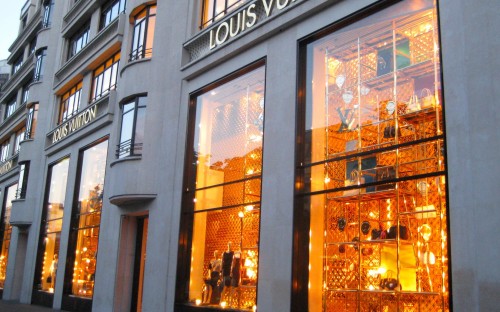But after five years of rapid growth driven by Chinese demand, the focus is swinging back to developed economies as an economic slowdown grips China.
Macroeconomic and social change has opened up sales in developed countries where half of luxury’s total global sales are made, with the US tipped for greatness. This comes as demand for talent from big luxury groups like LVMH, Kering and Richemont spread to the top business schools, say careers managers.
In the past two years, a stream of C-suite appointments have been made as brands look for additional sources of growth, at companies including Rolex, Louis Vuitton, Tiffany & Co and Burberry.
Consumer demand has fuelled the fire. Several new players have tapped capital markets with initial public offers – among them Prada, Michael Kors, and Salvatore Ferragamo. In a sign of the digital opportunity that traditional luxury has so far failed to take, online fashion site Net-a-Porter merged with rival Yoox last month.
But Comité Colbert, the French luxury goods association, says that more needs to be done to promote careers in the luxury sector.
Professor Angelo Manaresi, director of the MBA in design, fashion and luxury goods at Bologna Business School in Italy, says there is a historical clash between creatives and managers in the industry.
There is either an obsession on the product or an extreme focus on financial results – but both camps must work in tandem. “Each [luxury MBA] program to train future managers must allow each group to speak the language of the other,” says Angelo.
Steps have been taken to address the divide. Degrees in luxury goods, as well as MBA tracks and executive courses, have been popular in Europe at schools such as France’s ESSEC and HEC Paris, and SDA Bocconi in Italy, which has a course developed with Bulgari, the luxury jewellery brand.
Another is at London Business School, which launched an elective track in luxury management for MBAs in 2013. LBS is a member of Walpole British Luxury, a non-profit organization pioneering the British luxury industry that represents groups like Harrods, Claridges and Jimmy Choo, the shoe-maker which floated last year.
The British Fashion Council struck a partnership with LBS to investigate last year whether there was a formula for successfully commercialising creativity in the fashion industry.
By developing closer ties with fashion groups, business schools are able to offer their students juicy career prospects. “We aim to encourage more MBA graduates to pursue rewarding careers in the sector,” says Caroline Rush, chief executive officer of the British Fashion Council.
There are concerns that the brightest managers flock to more lucrative sectors like financial services. Luxury is hiring strongly but not on the same scale as management consultancies, for example, says Chris Higgins, assistant director at INSEAD’s Career Development Centre. “[But] we are still seeing a traction,” he says.
This means recruitment is more competitive. MBA students say they have a passion for luxury products because they are more tangible than services, and brands are well-known among cohorts. “There is a prestige,” Chris says.
He points to retail and in particular travel retail as strong prospects for MBAs. Brands like Ferragamo and bag-maker Furla are expanding in airports around the world.
But the sales boom prompted by demand from Asian tourists is slowing. The US is considered the next big growth opportunity for the luxury market because of consumer spending by locals as well as tourists, according research by the Boston Consulting Group.
BCG’s latest study found that consumers spent $1.8 trillion worldwide annually on items they defined as luxuries – far beyond the $390 billion figure usually cited.
“As older consumers realize that they have all the ‘things’ they want—and as younger people favour experiences they can share with their friends—consumers are spending more on everything from dining at five-star restaurants to exotic vacation travel,” says Jean-Marc Bellaïche, a BCG senior partner.
US luxury brands are led by Michael Kors, which doubled its European sales in 2013, and is also changing the face of the luxury industry. Ivan Coste-Manière, professor of marketing at luxury expert SKEMA Business School, calls Michael Kors “affordable luxury”.
He says the US dominates the luxury sector for diamonds and automobiles, but for global brands in general it is not a huge market. Career opportunity may be strongest in emerging markets like Columbia – which started as a niche player but is targeting more countries with a unique focus, says Ivan.
“We’re receiving more growth in areas like greater China and in the BRIC countries,” says Chris at INSEAD, the international business school.
He adds that big brands like LVMH or Richemont look for high levels of background experience, and managers who speak multiple languages. International experience is key and brands also place much value on analytical skills.
The personable nature of the luxury industry means that the recruitment process is more targeted. Often, luxury companies will hire bright managers and fit them into a business area, rather than recruit for specific roles.
Luana Carcano, director of the luxury business management MBA track at SDA Bocconi, says: “There is always space for well-trained and passionate professionals.”
Another new focus for brands, such as Prada, is converting concessions in department chains into directly operated stores. Hard luxury brands in particular – like watchmakers – are expected to open more stores selling directly to consumers.
Luana says the future challenge for luxury retailers will be the design and execution of an “omni-channel” strategy, and the alignment of all points of contact with clients.
This is part of a wider battle to capture shoppers’ attentions. There are myriad challenges that luxury managers must contend with. Luxury groups are being tested by waning enthusiasm from Asian consumers, volatile exchange rates and ongoing marketing tussles.
But while the giants of old stutter, current market trends are benefitting the niche operators, which are ramping up recruitment to grow.
Sales at Italian fashion designer Cucinelli have surged in China and the US. At Bottega Veneta, a brand owned by Kering and known for its handbags and leather goods, sales have risen by as much as 11%.
The big luxury groups are still hiring the most at business schools, but in the last few years medium and small firms have snapped up more managers, says Angelo at Bologna.
“They realize that they need to look outside of the domestic market to address growing transnational luxury segments,” he says.
Where luxury has been slower to expand has been on digital platforms. Analysts say this is to be expected; when making large purchases, consumers want to have an “experience”.
Burberry has been the exception. Burberry World, as it calls its online presence – which includes an internet store, catwalk shows, social networking and specially selected music – is touted as a major success story.
Angelo believes this is an area of career growth for business students. “Fast changing markets require younger people with fresh ideas, who can also take innovations from one sector of the luxury industry and bring [them] into another,” he says.
The Net-a-Porter-Yoox merger may be a sign that other luxury companies are beginning to recognize the need to connect virtual and physical worlds, too.
Lectra, a leader in integrated technology solutions for the fashion industry, and ESCP Europe Business School, last year established a Fashion and Luxury Chair to drive innovation in this area.
Daniel Harari, Lectra chief executive, says the company is committed to the development of industry professionals for the future.
The challenge future luxury managers will face will be replicating store experiences on digital channels. “That’s the big game – transferring the atmosphere at the point of sale to the web,” says Ivan at SKEMA.
This innovation is key to retaining luxury consumers who have fallen in love with brands. “You’re not talking about [customer] needs; you’re talking about dreams,” Ivan adds.
RECAPTHA :
11
93
92
06








